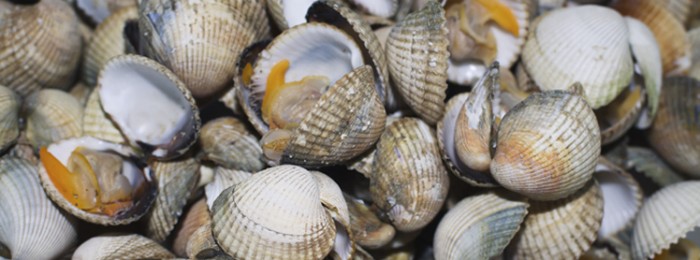01843 585310
info@kentandessex-ifca.gov.uk

01843 585310
info@kentandessex-ifca.gov.uk

Cerastoderma edule Cockles are small edible molluscs which live buried in sandy sediments. They have a thick equivalve shell, roughly heart shaped in profile, which can be up to 5 cm in length. Cockles feed by extending a siphon through which they extract plankton and other organic matter from the water column.
Cockles reproduce by mass spawning events in late spring with spat reaching approximately 10 mm length by the first winter. Generally found buried up to 5 cm below the surface of clean sand, muddy sands and muddy gravel; on middle to lower intertidal and sub-tidal sediments. Intertidal cockle beds are of significant importance as a food source for birds especially overwintering waders.
As such, all of the major beds within the KEIFCA district are contained within designated Marine Protected Areas. Watch the video below to observe how cockle surveys are conducted at sea by our KEIFCA Officers.
© Kent & Essex IFCA 2026 - All Rights Reserved | Privacy Policy